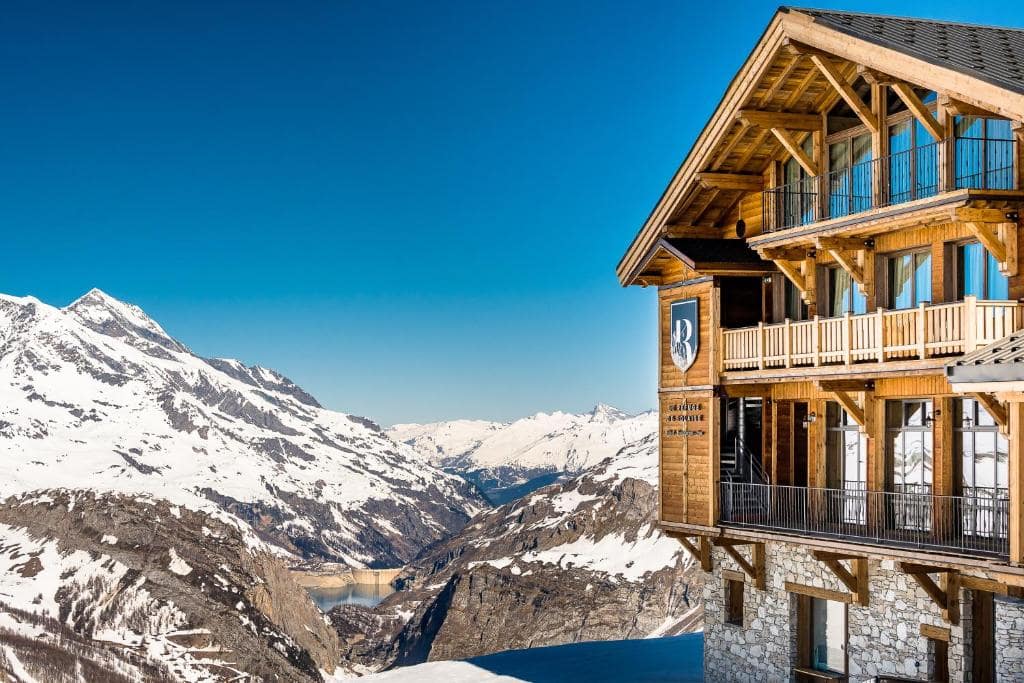Once simple, rudimentary shelters for mountaineers and hikers seeking protection from extreme conditions, mountain refuges have evolved considerably over the decades. From necessary austerity to ever greater comfort, these emblematic high-altitude sites now oscillate between tradition and modernity, while retaining their essential role of welcoming and sharing in the heart of the mountain ranges.
Historically, the first mountain refuges were primarily emergency shelters, built to offer minimal protection from the elements. Made of wood or stone and often devoid of amenities, they were used by pioneering mountaineers, such as those of the Mont-Blanc or Écrins.
READ MORE: The most unusual chalets to book this winter
With the growth in hiking and high-altitude tourism, these structures were gradually improved, incorporating dormitories, wood-burning stoves and basic catering facilities to meet the growing needs of mountain dwellers.
Even today, many refuges continue this tradition of simple, authentic hospitality, where hikers share a hot soup and anecdotes around a large wooden table. Places like the Refuge du Goûter or the Refuge de l'Aigle have retained this spirit of solidarity, where everyone finds comfort after a long climb.
A shift towards comfort and innovation
While the mountain spirit remains intact, the evolution of refuges has accelerated in recent years, driven by greater demands for comfort and ecology.
Many facilities now offer services that go far beyond the bare essentials: improved bedding, solar-powered showers, efficient heating, and sometimes even fine cuisine based on local produce.
Le Col de la Vanoise Refuge, for example, offers refined cuisine with dishes typical of the region, while being powered entirely by renewable energy.
In some refuges, the level of comfort now resembles that of a small high-altitude hotel. At Refuge de SolaisePerched at an altitude of 2,551 metres in Val d'Isère, visitors can enjoy a spa with jacuzzi and sauna overlooking the snow-covered peaks - a revolution compared to traditional refuges.
These top-of-the-range facilities are attracting new customers looking for a mountain experience that combines adventure and well-being.
An ecological and logistical challenge
However, modernising refuges without betraying their essence is a major challenge. At altitude, the transport of materials and resources remains complex, and the environmental impact must be minimised.
That's why some refuges have opted for innovative solutions, such as melt-water recovery, solar panels or on-site waste incineration. Visit Promontoire Refugein the Écrins massif, illustrates this approach by combining energy self-sufficiency with sustainable resource management.
At the same time, the increase in the number of visitors to the mountain ranges raises the question of how to preserve these areas. Refuges have to juggle opening their doors to the public with limiting the human impact on fragile ecosystems.
The introduction of reservation quotas, as is the case on some of the Mont Blanc's most popular itineraries, is becoming a necessity to guarantee a quality experience while preserving the mountain.
Whether they remain faithful to the minimalist spirit or fully embrace modernity, mountain refuges continue to embody a unique experience. They are places to rest, to meet and to contemplate, where experienced hikers mingle with amateurs looking for a moment of escape in the heart of the summits.

